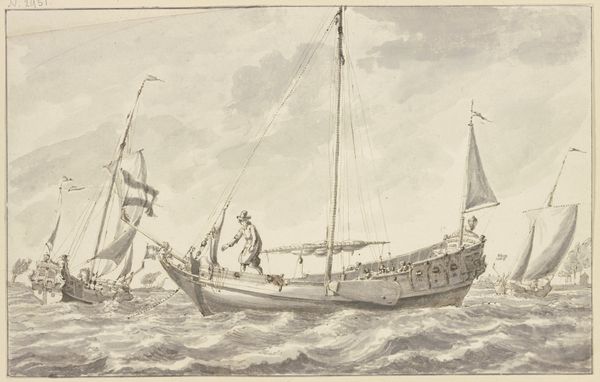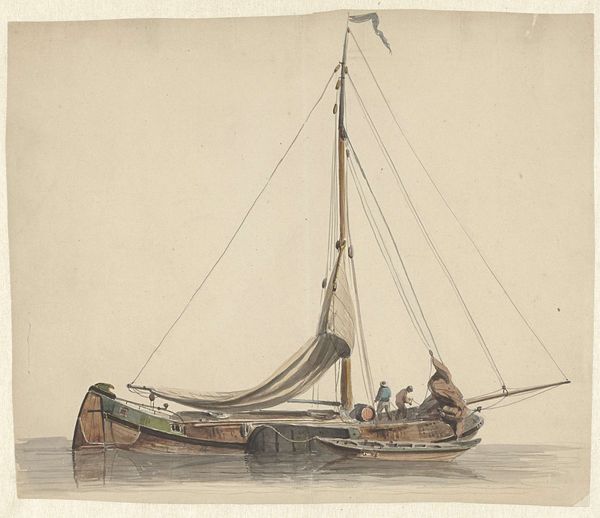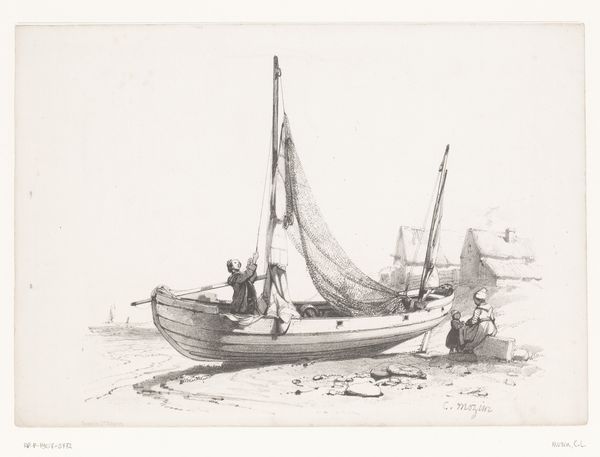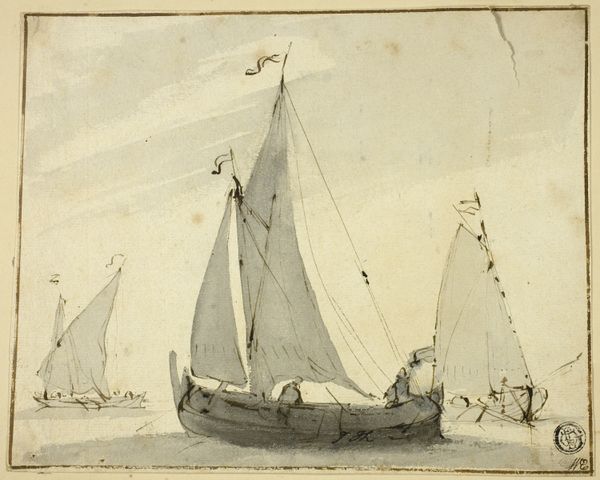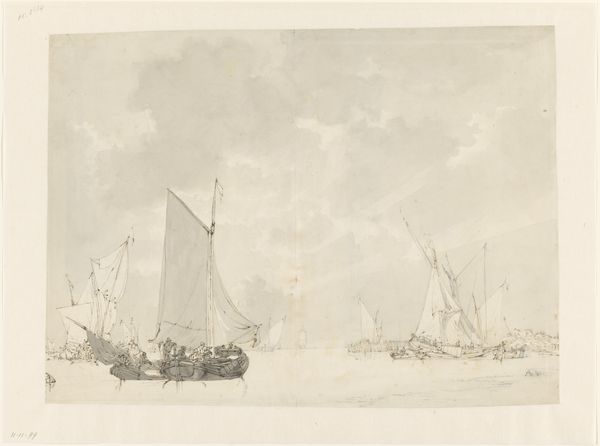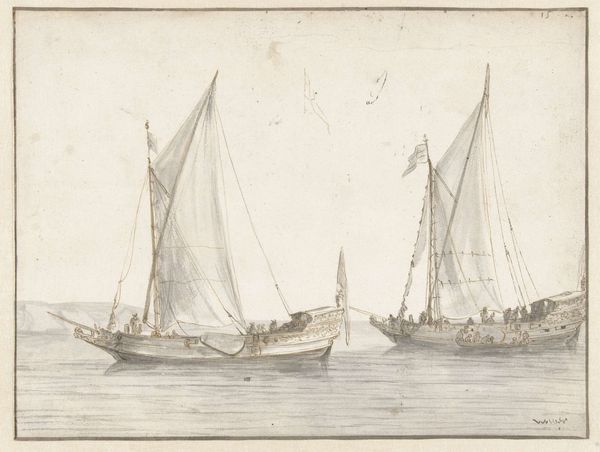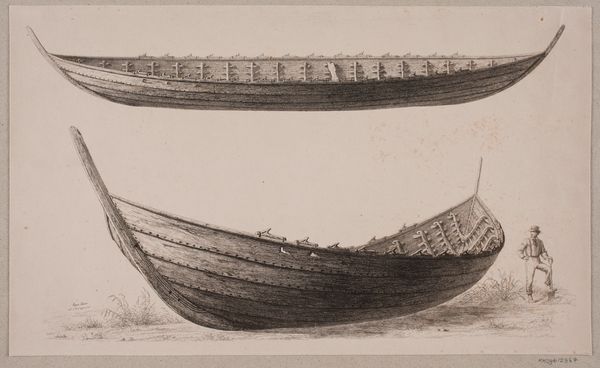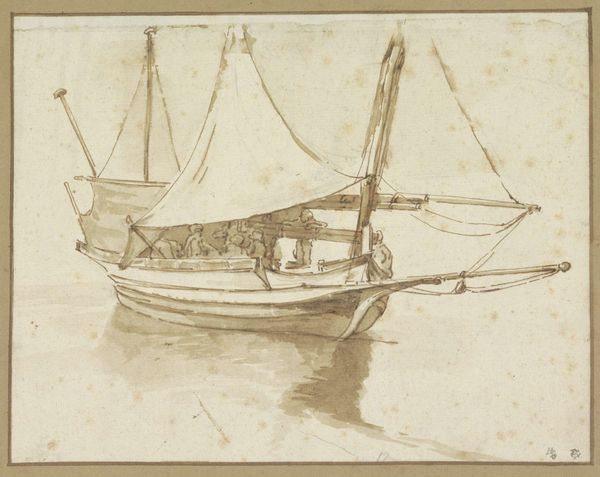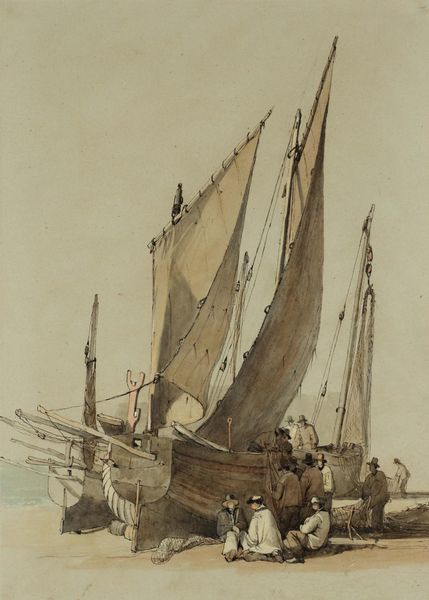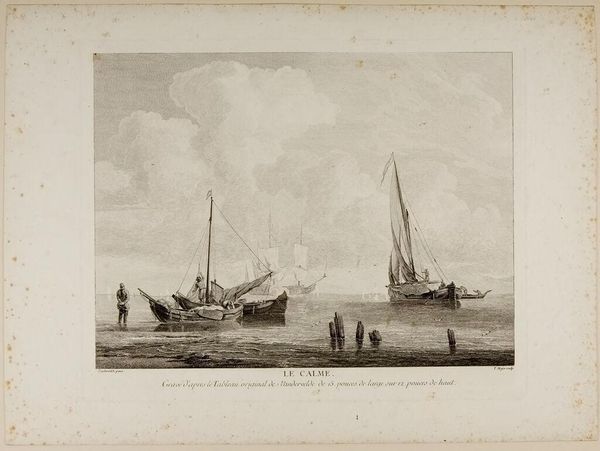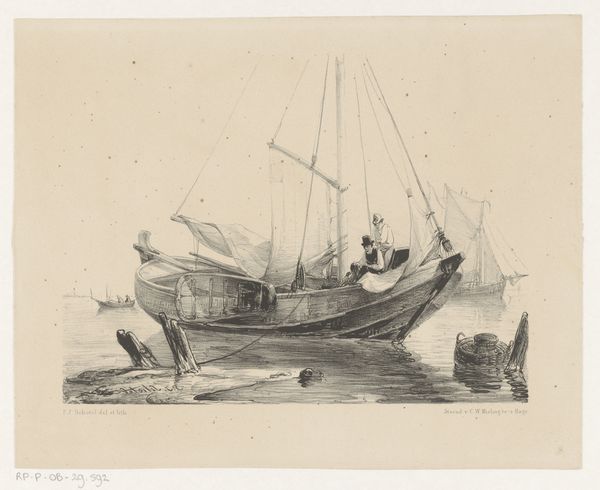
drawing, plein-air, watercolor
#
drawing
#
impressionism
#
plein-air
#
landscape
#
watercolor
#
coloured pencil
#
watercolour illustration
#
genre-painting
#
watercolor
#
realism
Dimensions: sheet: 38.26 × 55.88 cm (15 1/16 × 22 in.) board: 40.96 × 58.42 cm (16 1/8 × 23 in.)
Copyright: National Gallery of Art: CC0 1.0
Editor: So, here we have William Stanley Haseltine's "Blankenbergh," a watercolor and drawing from 1876. It strikes me as very peaceful, almost melancholic, with those boats just resting on the shore. How do you interpret this work, considering its historical context? Curator: That melancholic feel is interesting. Considering its historical context, I immediately look at the rise of seaside tourism in the late 19th century. Do you think the image serves as promotion of a specific location, perhaps? The detail applied to the boats suggests an appreciation for the labor involved. Were paintings like this sometimes commissioned or acquired by people with political motives or who sought social standing, or simply celebrating their lifestyle? Editor: That's a fascinating point. I hadn’t considered the social implications of seaside tourism. It feels like this could be subtly romanticizing a particular vision of labor, without explicitly showing anyone working, though. Curator: Exactly! Who has the time and money to enjoy this peaceful vista? And who profits from this new trend? How might the depiction of these working boats play into that social dynamic? Editor: It’s like the painting quietly whispers about class and leisure without directly addressing it. Were these images sometimes displayed in specific venues that further amplified their political effect? Curator: Often, yes. Think about private parlors, travel agencies or even governmental buildings. The distribution and reception venues heavily influence what this image is ‘doing.’ Consider its circulation…reproductions... how would they have reached different audiences? Editor: This really broadens my perspective. I initially just saw it as a pretty seascape, but it’s much more loaded with social and political undertones than I realized. Thanks, that helps a lot! Curator: It is deceptively simple, isn't it? Looking beyond the surface and understanding the interplay between art, social class, and the power structures that support the art world make art history perpetually interesting.
Comments
No comments
Be the first to comment and join the conversation on the ultimate creative platform.

